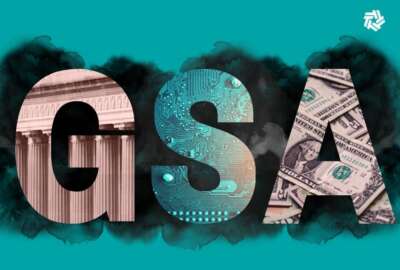DoD’s $1B contract proof new model for GWACs is working
GSA made an award to Booz Allen Hamilton under the OASIS multiple award contract on behalf of the Defense Department for a host of global threat mitigation...
The General Services Administration’s announcement that it awarded nearly a $1 billion contract on behalf of the Defense Department under the One Acquisition Solution for Integrated Services (OASIS) multiple award contract is noteworthy for several reasons.
Starting off, GSA’s award to Booz Allen Hamilton to provide a host of services under DoD’s Global Threat Mitigation Program is the largest one by dollar figure to date.
Second, it’s solid proof that the Army’s pledge to spend $500 million a year under OASIS in return for reduced fees is working. The Army committed to a high level of spending in March 2015 and this award, which will support an integrated coalition of joint commands, including the Army National Guard, Army Commands/Army Service Component Commands (ACOMs/ASCCs) and Combatant Commands (COCOMs), is part of that guarantee.
Finally, the OASIS model of lowering fees in exchange for a dollar figure commitment is working and likely will spread to future governmentwide contracts such as Alliant 2.
Let’s go back to the award to Booz Allen for a second. GSA said under the five-year indefinite delivery, indefinite quantity deal, Booz Allen will provide assessments to identify and analyze evolving and emerging threats, and provides the potential capabilities the military can utilize to combat the threats.
The services under the contract include program and project management, strategic planning and capabilities, threat, and intelligence analyses and assessments, integrated air and missile defense program support, information, operations and special activity division support and operational influence platform services.
“The ultimate end state of this task order is to bolster the U.S.’s security interests and positions, both at home and abroad, and to protect forces from emergent threats,” GSA said the task order stated.
The Army’s $500 million commitment has gotten off to a strong start.
GSA reported on its OASIS dashboard that the Army is the second biggest spender under OASIS, with more than $106 million obligated so far. The Air Force, which was the first agency to commit $500 million in spending under the contract, leads all agencies with $192 million in total obligations.
The Homeland Security Department, which signed a similar agreement as those signed by the Army and the Air Force and pledged $250 million in spending under OASIS in return for reduced fees earlier this summer, has spent the most under the contract among civilian agencies with $5.1 million.
In all, agencies have obligated more than $412 million across 147 task orders on OASIS and the small business version of the contract since 2014.
Finally, the fee structure piece has been a bugaboo for agencies using GSA contracts for some time. Agencies like the convenience of GSA schedules and GWACs, but continue to develop their own multiple award contract vehicles because of the false belief they can do it cheaper.
On this $937 million award, DoD would’ve paid a fee of more than $7 million under the standards 0.75 percent fee. But with the agreement for a reduced fee in exchange a large dollar figure commitment, DoD will pay a fee of just under $1 million — a nice savings that the Pentagon can use toward other needs.
That type of discount would seem to be attractive to agencies in this time of tight budgets and increasing needs.
This post is part of Jason Miller’s Inside the Reporter’s Notebook feature. Read more from this edition of Jason’s Notebook.
Copyright © 2025 Federal News Network. All rights reserved. This website is not intended for users located within the European Economic Area.
Jason Miller is executive editor of Federal News Network and directs news coverage on the people, policy and programs of the federal government.
Follow @jmillerWFED






